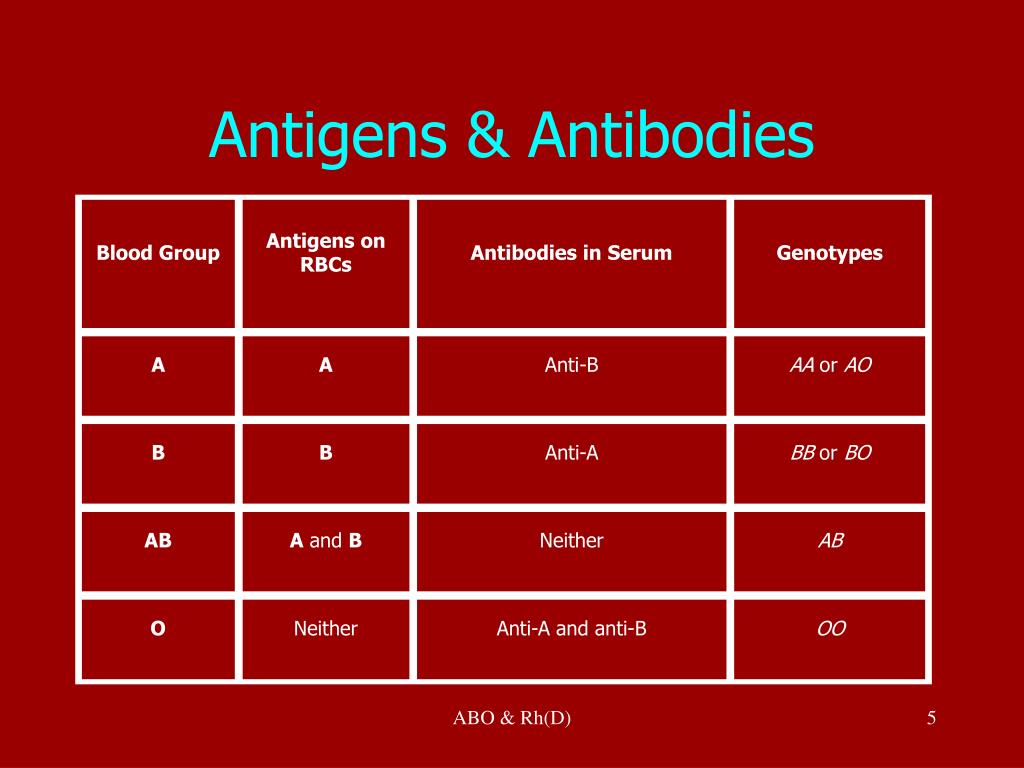
2 A type O individual has both alleles for the inactive glycosyltransferase. This is not necessarily because the type O allele is silenced or recessive, but is instead a result of the activity of the A or B glycosyltransferase, while the glycosyltransferase for the O allele is inactive. When the allele for blood type A or B is inherited with type O, the individual will be either type A or B. Both glycosyltransferase alleles for antigens A and B are expressed when inherited together, producing both antigens and resulting in blood type AB. These alleles are represented as IA for type A, IB for type B, and i for type O. People inherit two genes for blood type or, more accurately, two alleles, one from each parent. An enzyme, glycosyltransferase, is the product of this gene, 2 and differences in the sequence of this enzyme (polymorphisms) determine whether the enzyme attaches N-acetylgalactosamine (antigen A), galactose (antigen B), or no sugar (type O) |Figure 1|. 1 Consequently, there isn't a specific "antibody A" gene or "antibody B" gene inherited with a complementary A or B antigen.Ī gene for the specification of antigens A or B or type O determines the blood type. Immunoglobin genes are capable of producing an essentially infinite number of antibodies through a complex editing and selective process. Antibodies A and B belong to the "M" class of immunoglobins and are expressed from the immunoglobin genes of B-cell lymphocytes upon exposure to foreign antigens. Blood type AB, however, produces no antibodies because both antigens present on the cells are recognized as "self." Blood type O produces antibodies A and B, because neither antigen A nor B is present on the cells of type O individuals |Table 1|. People with blood type A produce antibody B when exposed to antigen B, and those with blood type B produce antibody A when exposed to antigen A. These sugar arrangements are part of an antigen capable of stimulating an immune response that produces antibodies to identify and destroy foreign antigens. 1 Note that each is identical, except that types A and B have an additional sugar: N-acetylgalactosamine for A, and galactose for B. Figure 1 shows the arrangement of sugars that determines each of the A, B, and O blood types.

These cell surface markers are characterized by a protein or lipid that has an extension of a particular arrangement of sugars. With our recent ability to rapidly sequence genes, the ABO blood group is also proving to be a valuable asset for determining human migration patterns and origins.ĪBO blood types are determined by a cell surface marker that identifies the cell as belonging to "self" or to that individual. Understanding the importance of the ABO blood group is not limited to clinical applications, however. The ABO blood group is the most significant blood factor in clinical applications involving blood transfusions. Many people know what their blood type is and understand that blood types must be matched in a medical emergency.


 0 kommentar(er)
0 kommentar(er)
